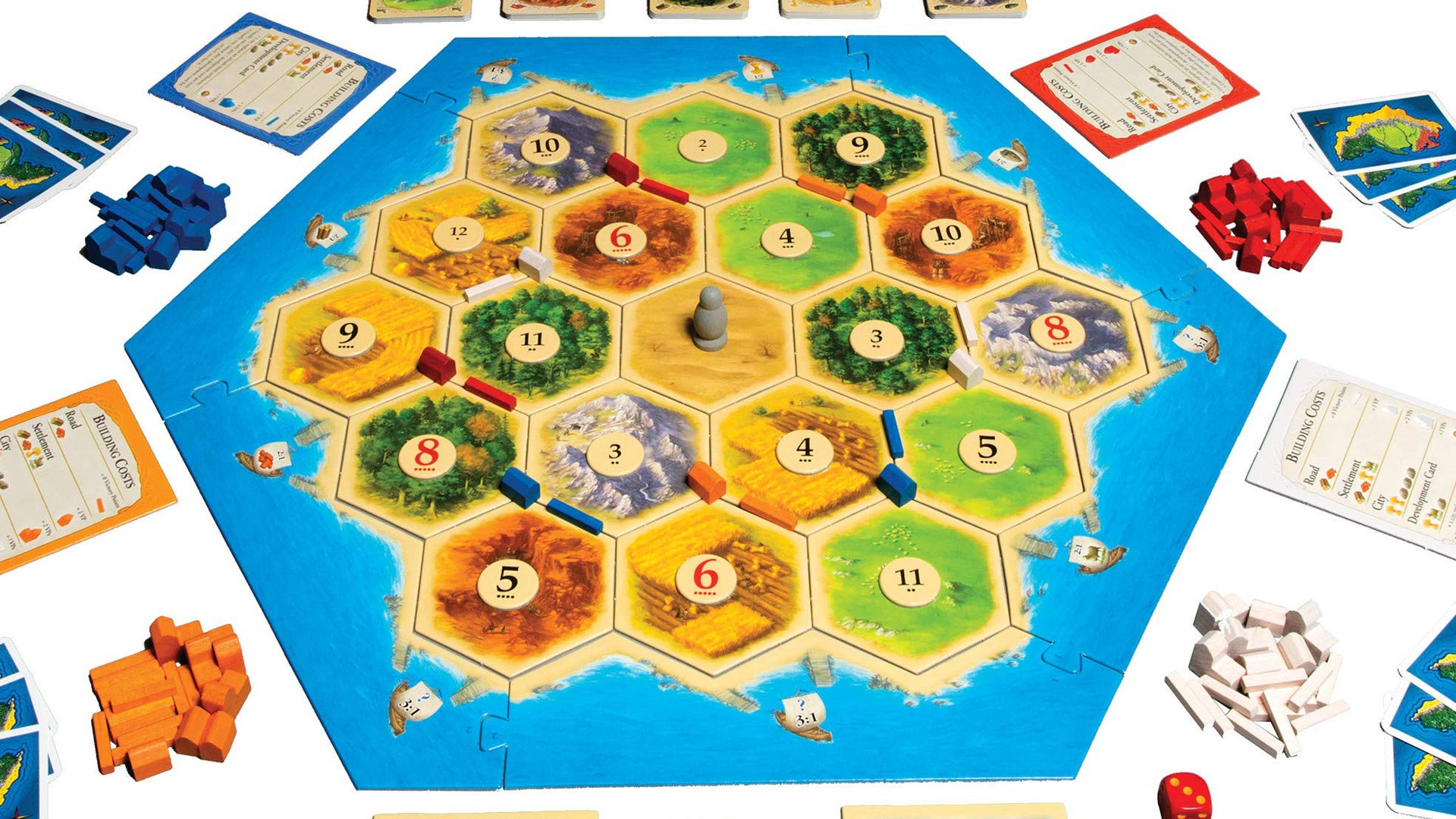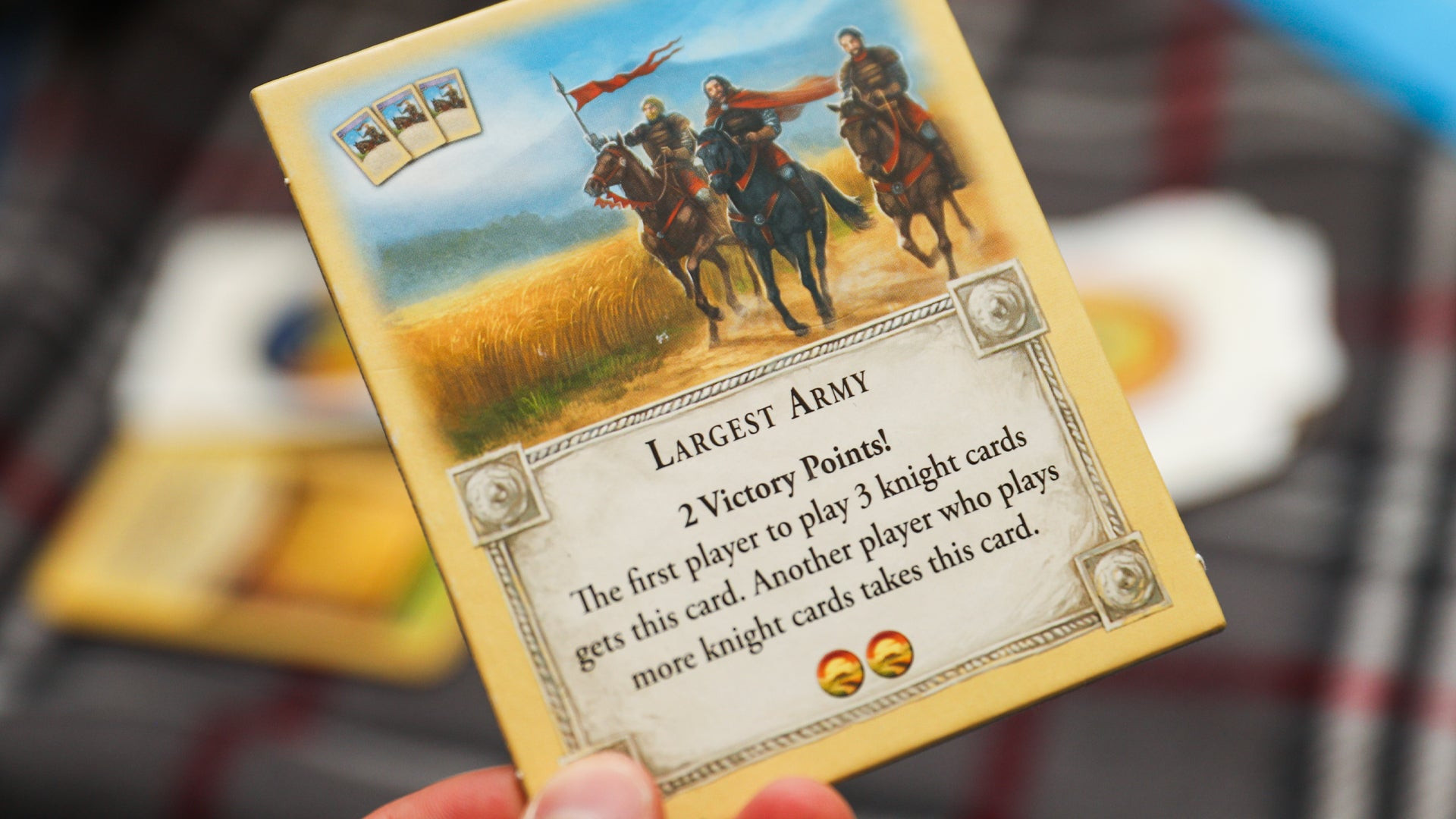Settlers of Catan, now known simply as Catan, stands as a titan in the world of modern board games. This classic game of resource management, trading, and strategic settlement building has captivated millions globally, sparking a modern board game revolution. Its broad appeal is undeniable, with celebrity fans ranging from Kristen Bell to Carly Rae Jepsen. Having sold over 20 million copies in the decades since its release, Catan’s influence on tabletop gaming is immense and continues to grow.
While Catan boasts numerous expansions and spin-offs, and even a movie adaptation in development, many are still discovering or revisiting this cornerstone of board gaming. Whether you’re a complete novice eager to learn or seeking a refresher on the official Catan rules, this guide will provide you with everything you need to know about How To Play Settlers Of Catan.
 YouTube tutorial on how to play Catan
YouTube tutorial on how to play Catan
Watch a helpful video tutorial to visually learn how to play Catan.
Let’s dive into the essential rules and mechanics to get you started on your Catan adventure.
How Many Players and How Long Does a Game of Catan Last?
Catan is designed for 2 to 4 players, making it perfect for family game nights or gatherings with friends. In this strategic board game, players compete to become the dominant settlers on the island of Catan by strategically acquiring resources and constructing settlements, cities, and roads.
A typical game of Catan lasts around 60 minutes. However, playtime can vary based on player count, familiarity with the rules, and the pace of dice rolls. Games can be quicker with experienced players or extend longer with more players or strategic gameplay.
Example of a Catan board setup, showing the hexagonal tiles and number tokens.
Setting Up Your First Game of Catan
One of Catan’s unique features is its modular board, offering varied setups for endless replayability. While experienced players enjoy randomized setups, beginners should start with the recommended beginner layout to learn how to play Settlers of Catan effectively. This setup is detailed in the official Catan rulebook, a valuable resource for all players.
Here are the step-by-step instructions for setting up Catan for beginners:
- Assemble the Frame: Begin by constructing the border of Catan using the blue frame pieces, clipping them together to form the outer edge of the island.
- Arrange Land Hex Tiles: For the beginner game, arrange the hexagonal land tiles according to the suggested layout in the rulebook. Alternatively, for a more unpredictable game, shuffle the tiles face down and place them randomly within the frame.
- Place Numbered Tokens: Following the beginner setup, place the circular number tokens on the land hexes as indicated. For a variable setup, arrange them alphabetically starting from a corner and moving counter-clockwise towards the center.
- Starting Robber Placement: Position the robber pawn on the desert hex tile. The desert hex does not produce resources and is the robber’s starting location.
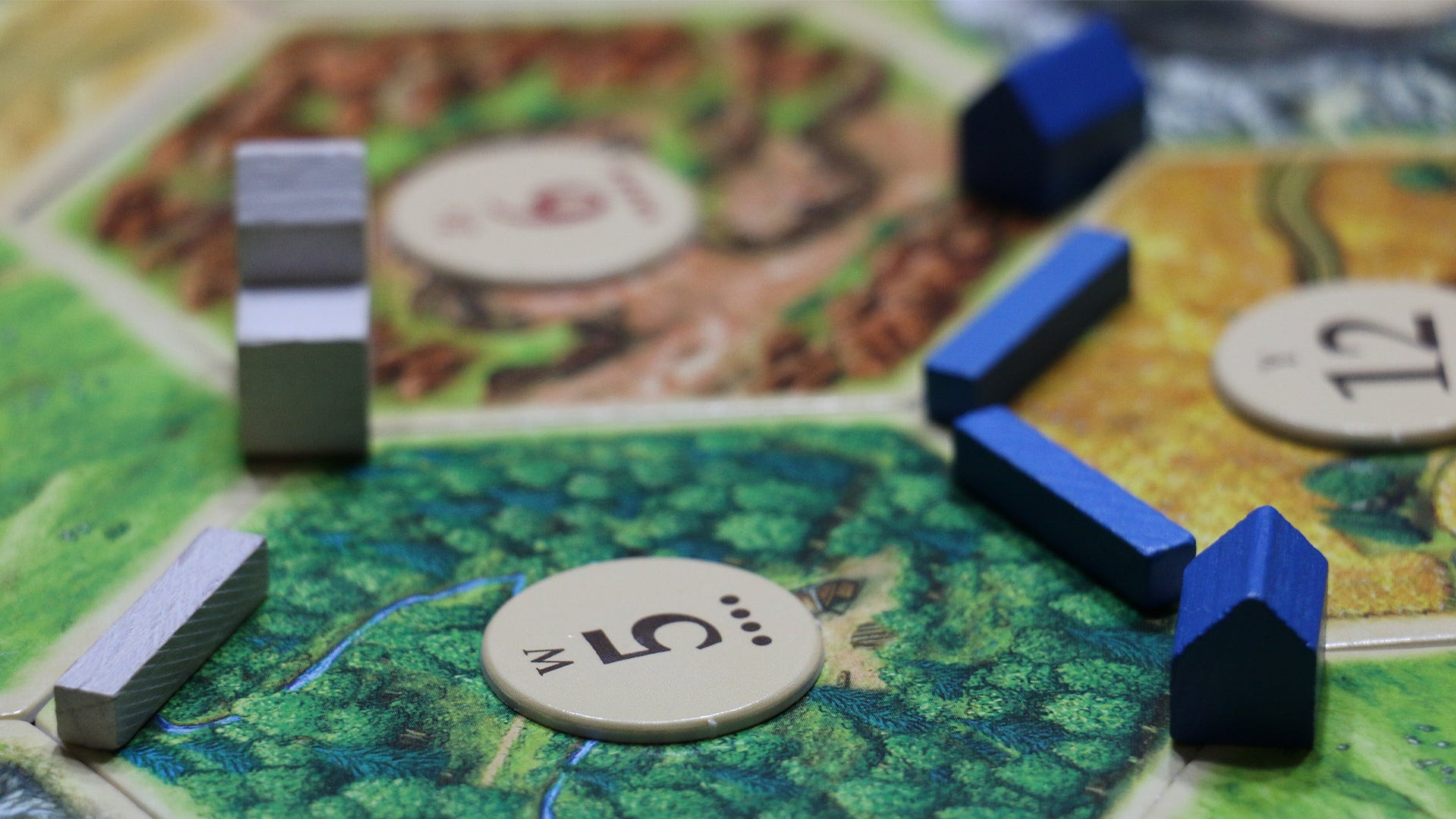 A game in progress showing settlements, roads and resource cards on a Catan board
A game in progress showing settlements, roads and resource cards on a Catan board
Players strategically place settlements and roads to gather resources in Catan.
Getting Started: Catan Player Setup
Once the board is ready, each player chooses a color and takes the corresponding game pieces: five settlements, four cities, and fifteen roads. Keep these pieces in front of you, forming your personal supply.
For the initial placement, in a beginner game, follow the rulebook’s guide to place two settlements and two roads on the board. Experienced players use a different method: players take turns placing a settlement and an adjacent road, and then reverse the order to place their second settlement and road. This adds a layer of strategy to the starting positions.
Each player receives a building cost card, which serves as a handy reminder of the resources needed to build roads, settlements, cities, and purchase development cards throughout the game.
Place the Longest Road and Largest Army cards, along with the two dice, within easy reach of all players, usually beside the game board.
Organize the resource cards (sheep, wood, brick, ore, and wheat) into separate, face-up piles, creating the resource bank from which players will draw.
In the recommended beginner setup, players gain starting resources based on the hexes surrounding their settlement marked with a white star in the rulebook. For example, Yellow might receive a sheep, wood, and wheat. In the experienced setup, resources are collected from the hexes adjacent to the second settlement placed.
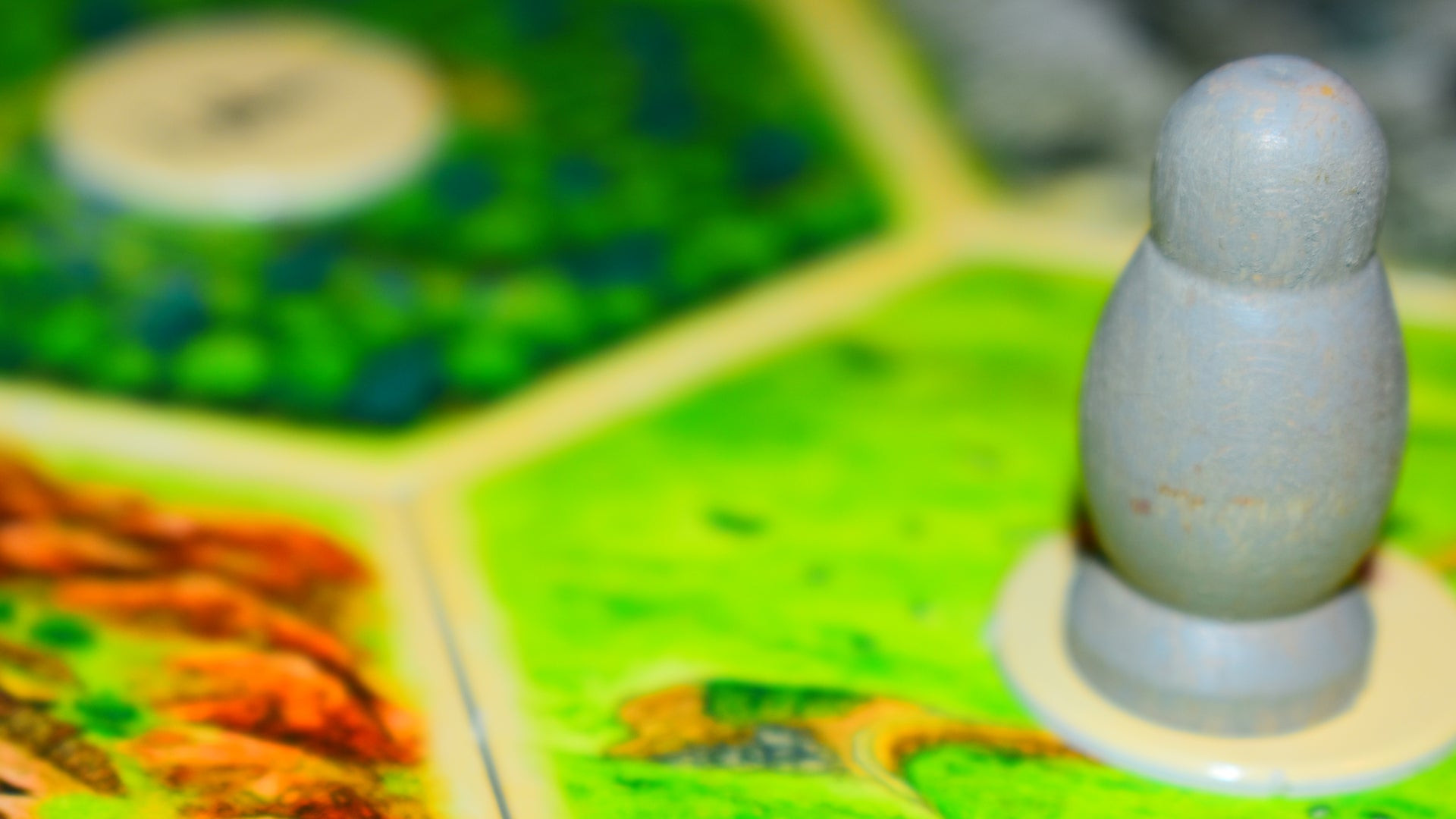 The robber pawn in the Settlers of Catan board game
The robber pawn in the Settlers of Catan board game
The robber pawn blocks resource production and allows stealing from other players.
Understanding the Rules: How to Play Catan Step-by-Step
A turn in Catan is divided into three distinct phases, each crucial to mastering how to play Settlers of Catan effectively:
- Resource Production
- Trading
- Building
Let’s explore each phase in detail:
1. Resource Production: Rolling for Resources
At the start of your turn, roll both dice. The sum of the dice determines which hexes produce resources in this round. Players with settlements adjacent to hexes with the rolled number collect the corresponding resource. For instance, if a 9 is rolled, any settlements bordering a hex with a ‘9’ token will produce resources of that hex’s type (e.g., sheep from a pasture hex). Multiple players can collect resources on the same roll if their settlements are adjacent to the producing hexes.
Carefully monitor the dice rolls and check your settlements to collect resources. Catan incorporates probability, as the frequency of resource production is tied to the likelihood of rolling each number on two dice. Notably, 7 is the most probable roll, but it triggers a special event – the robber.
The Robber Mechanic: Dealing with a 7
Rolling a 7 activates the robber, introducing a disruptive element to the game.
First, any player holding more than seven resource cards must discard half of their hand (rounded down) back to the resource piles. This affects all players, including the one who rolled the 7.
Next, the player who rolled the 7 moves the robber to any numbered hex on the board. Crucially, the hex where the robber is placed ceases to produce resources as long as the robber remains there. No players can collect resources from settlements adjacent to that hex if its number is rolled.
As a further action, the player who moved the robber can steal one resource card at random from a player who has a settlement adjacent to the hex where the robber is now placed. If multiple players are eligible, choose only one to steal from.
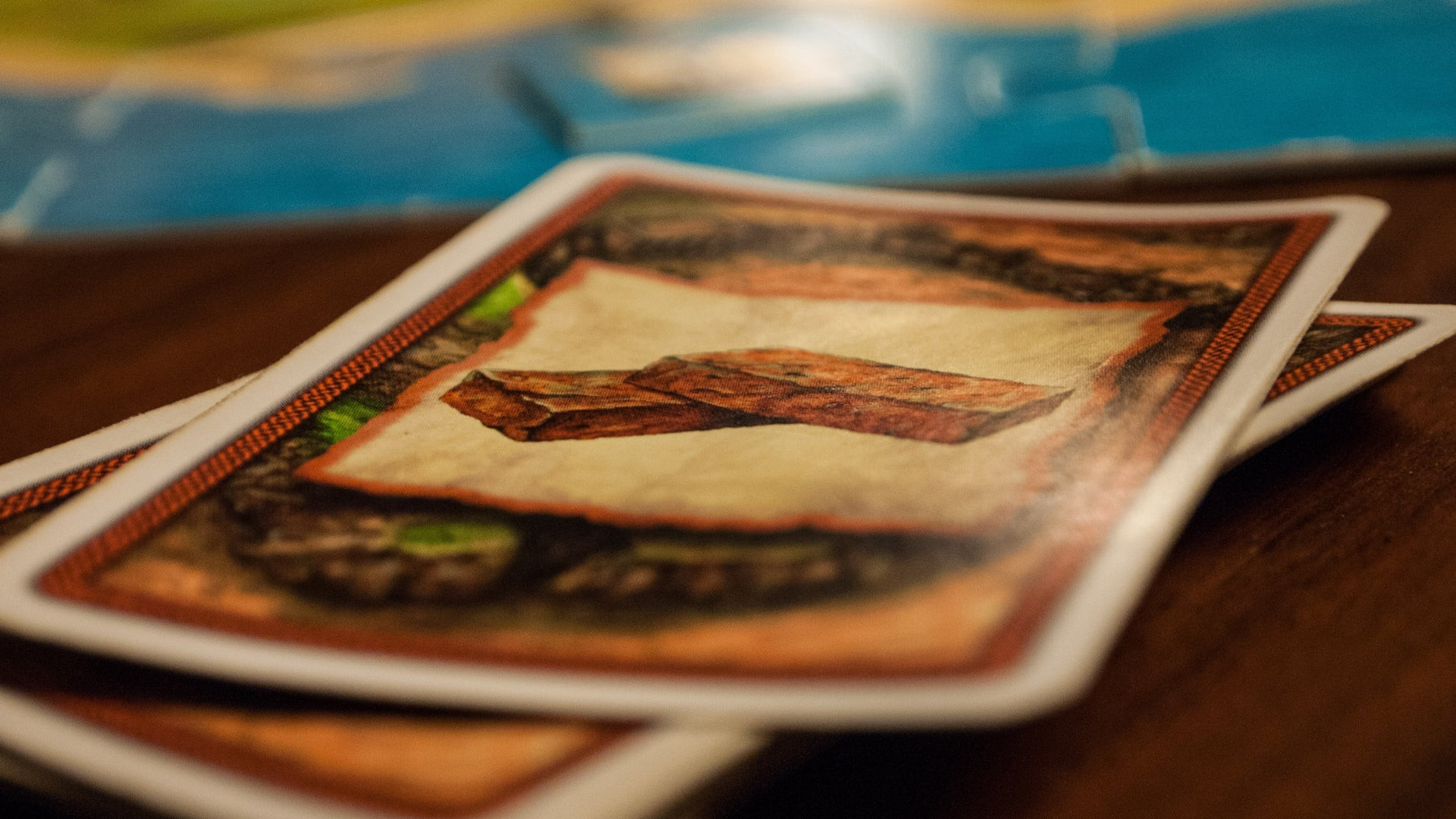 Resource cards and development cards in Catan
Resource cards and development cards in Catan
Resource cards are essential for trading and building in Catan.
2. Trading: Negotiating for Resources
The trading phase in Catan allows players to exchange resources, vital for strategic development. There are two forms of trade:
-
Domestic Trade: This involves direct negotiation with other players. On your turn, you can announce the resources you need and what you are willing to trade. Other players can then offer trades to you, proposing exchanges and counter-offers. Players can only trade with the active player, not amongst themselves during another player’s turn.
-
Maritime Trade: This is trading with the “bank” and is particularly useful when player-to-player trades are unfavorable. Maritime trade allows you to exchange four of any one type of resource for one resource of your choice. This is always available, but having a settlement or city on a harbor provides better rates. Harbors offer 3:1 trades in general, and some specialized harbors even allow 2:1 trades for a specific resource type, significantly improving your trading power.
 A settlement and road placed on the Catan board
A settlement and road placed on the Catan board
Roads and settlements are the foundation for expansion and victory in Catan.
3. Building: Expanding Your Reach
The final phase of your turn is building. Here, you use accumulated resources to construct roads, settlements, and cities, and to purchase development cards. You can build multiple items in a single turn, provided you have the necessary resources and available building pieces.
-
Roads: Costing one brick and one wood, roads are placed along the edges of hexes. They extend your network, allowing you to build new settlements further into the island and access more resource opportunities. The player who builds the longest continuous road of at least five segments first earns the “Longest Road” card, worth two bonus victory points. This card can change hands if another player builds a longer road.
-
Settlements: Settlements cost one brick, one wood, one sheep, and one wheat. They are crucial for gaining victory points (each settlement is worth one) and for resource production. Settlements must be connected to your existing road network and must be at least two road segments away from any other settlement (including your own). Each settlement yields resources when an adjacent hex number is rolled.
-
Cities: Cities are upgrades to settlements, costing three ore and two wheat. You must already have a settlement on the board to upgrade it to a city. Cities double your resource production from the adjacent hexes and are worth two victory points each.
Development Cards: Adding Strategy and Surprise
Purchasing development cards is another building action, costing one sheep, one ore, and one wheat. These cards are drawn blindly from a shuffled deck and kept secret until played. You cannot play a development card in the same turn you purchase it (except for Victory Point cards).
There are three types of development cards in Catan:
-
Knight Cards: Similar to the “Longest Road,” the first player to play three knight cards earns the “Largest Army” card, worth two victory points. This card can also be stolen if another player plays more knights. Playing a knight card also allows you to move the robber as if you had rolled a 7.
-
Progress Cards: These cards have varied effects described on the card, often providing immediate benefits like resource gains or free building opportunities. Progress cards are discarded after use.
-
Victory Point Cards: These cards provide secret victory points and are revealed only when you have enough total points to win the game. Victory Point cards are unique in that they can be played in the same turn they are purchased.
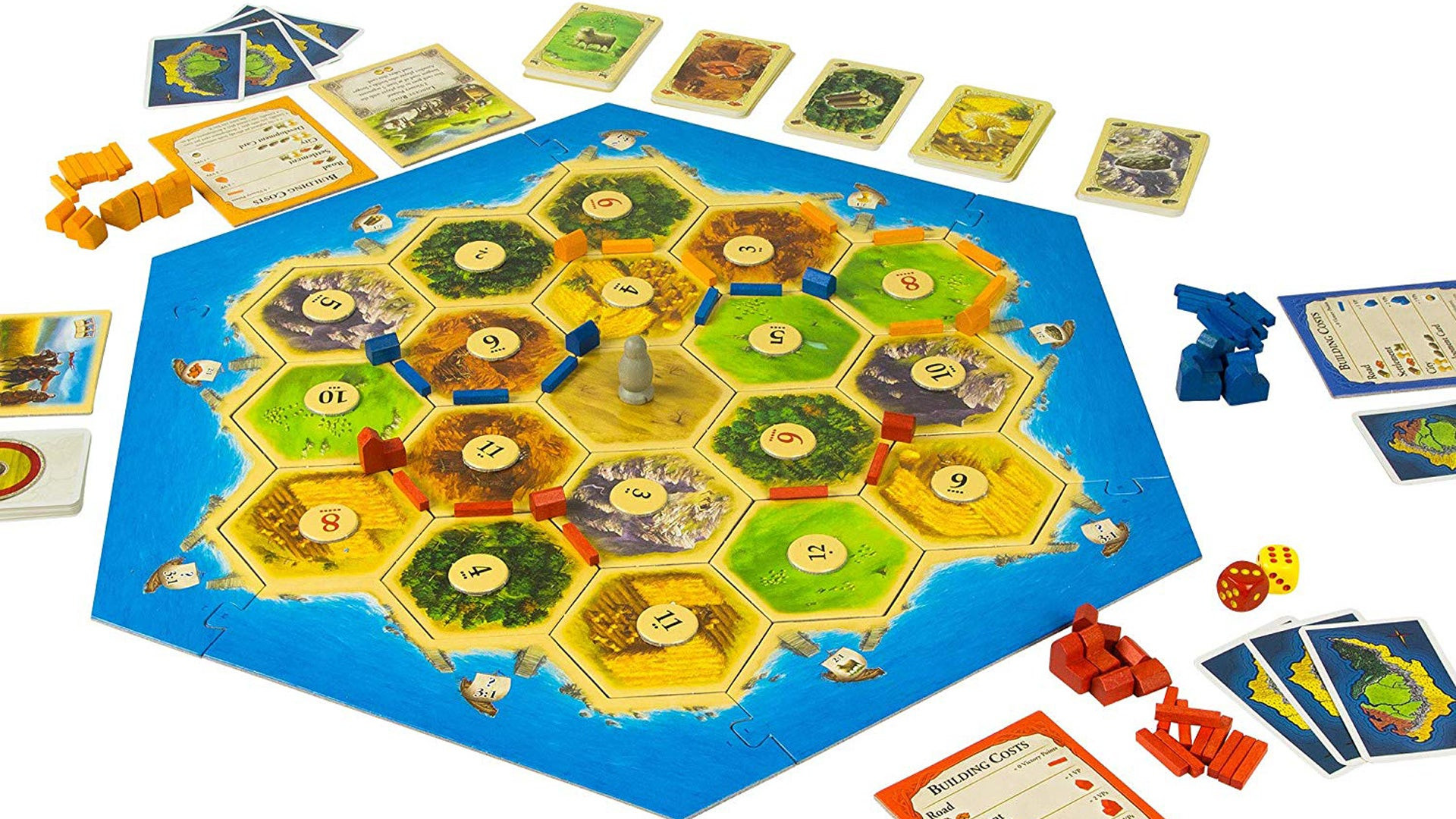 Example layout of a Catan game board with settlements and cities
Example layout of a Catan game board with settlements and cities
Strategic placement of settlements and cities is key to winning Catan.
Winning the Game: Achieving Victory in Catan
The goal in Catan is to be the first player to reach 10 victory points on your turn.
Victory points are accumulated through:
- Settlements (1 point each)
- Cities (2 points each)
- Longest Road card (2 points)
- Largest Army card (2 points)
- Victory Point development cards (1 point each)
Keep track of your own and your opponents’ victory points throughout the game to strategize effectively and anticipate the game’s end.
Playing Catan with Just Two Players
While the standard Catan game is designed for 3-4 players, there are official rules for playing Catan with two players. These rules, initially part of the Traders & Barbarians expansion, were later made freely available. The two-player variant uses trade tokens and neutral players to adapt the game for fewer players.
Two-Player Setup:
Set up the game as you would for a four-player game. Neutral players are simulated by placing initial settlements according to the two-player rules diagram. Human players set up their initial settlements and roads as usual. Each human player starts with five trade tokens (any small tokens will work).
The Largest Army card is a valuable source of victory points in Catan.
Two-Player Catan Rules:
In the two-player version, human players roll the dice twice each turn for resource production, getting two different results (re-roll if the second roll matches the first). Resources are collected as normal. Neutral players do not collect resources.
Whenever a human player builds a road or settlement, they must also build the same structure for a neutral player for free. If a settlement cannot be built for the neutral player due to placement rules, a road is built instead. This rule applies only to roads and settlements, not cities or development cards. Neutral players cannot gain the Longest Road bonus.
Human players can spend trade tokens to perform special actions:
- Forced Trade: Spend tokens to draw two random cards from your opponent and give them two cards from your hand.
- Move the Robber: Spend tokens to move the robber to the desert hex.
The cost of these actions depends on victory point standings: if you have fewer or equal victory points than your opponent, actions cost one token; if you have more victory points, each action costs two tokens.
Players can gain trade tokens by discarding a knight card (earning two tokens) or by building settlements adjacent to the desert or coast (earning one to three tokens).
While the two-player variant is available, Catan is ideally experienced with three or four players to fully enjoy the dynamic trading and player interaction that the game offers. However, the two-player rules provide a solid alternative for enjoying Catan with just two people.
With these comprehensive instructions, you’re now equipped to play Settlers of Catan! Gather your friends, set up the board, and embark on your journey to become the ruler of Catan.

